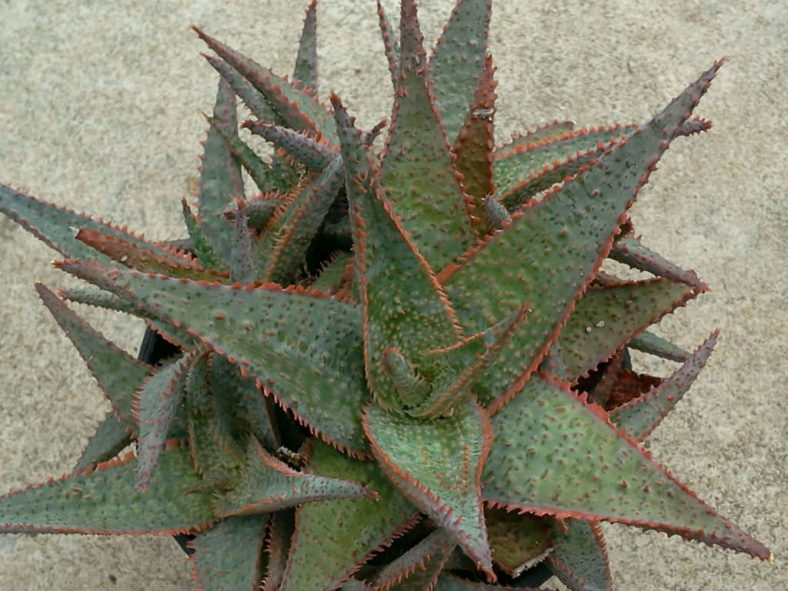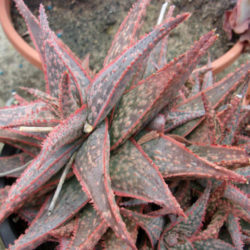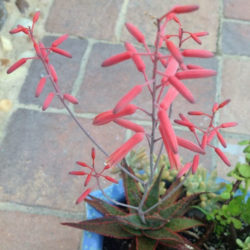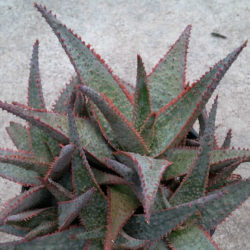Aloe 'Bright Star' is one of the Kelly Griffin hybrids sold under two names.
Scientific Name
Aloe 'Bright Star'
Synonym(s)
Aloe 'Donnie'
Scientific Classification
Family: Asphodelaceae
Subfamily: Asphodeloideae
Genus: Aloe
Origin
Aloe 'Bright Star' is a hybrid created by Kelly Griffin while he worked as the Curator of Xerophytes at Rancho Soledad Nurseries in Rancho Santa Fe, California, United States. It is also distributed under the Retro Gang name Aloe 'Donnie'. The parentage is unknown.
Description
Aloe 'Bright Star', also sold as Aloe 'Donnie', is a beautiful small succulent that forms rosettes of fleshy, gray-green leaves with white spots and delicately toothed edges of deep pink to red. The rosettes can reach up to 4 inches (10 cm) in height and diameter and produce offsets to form a clump with age.
The plant produces delicate spikes of tubular, red flowers during summer and fall.

Hardiness
USDA hardiness zone 9b to 11b: from 25 °F (−3.9 °C) to 50 °F (+10 °C).
How to Grow and Care
Aloes are very forgiving plants. As with all succulents, it's essential that Aloe is never allowed to sit in stagnant water, and the plant should be carefully monitored to watch for signs of overwatering.
Aloes are not particularly fast-growing and will only rarely need repotting. Repot plants in the spring that are tipping over their pots or have ceased growing. Use a fast-draining potting mix with one-third sand or pebbles. When repotting a larger plant, dividing the root ball carefully is possible. Some kinds of Aloe will send off offsets that can be potted independently.
It needs intense, bright light. They can withstand full summer sun once acclimated. In the winter, provide bright light. It prefers warmer temperatures of 70 to 80 °F (21 to 27 °C) but will survive down to 40 °F (4.5 °C). Feed with a cactus fertilizer in the summer only. Suspend feeding in the winter as the plant goes dormant.
See more at How to Grow and Care for Aloe.
Links
- Back to genus Aloe
- Succupedia: Browse succulents by Scientific Name, Common Name, Genus, Family, USDA Hardiness Zone, Origin, or cacti by Genus
Photo Gallery
Click on a photo to see a larger version.


